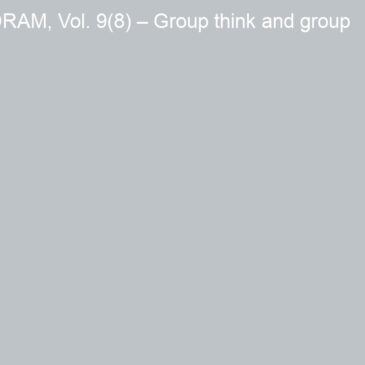For many, drinking at a bar alone is different from drinking at a bar with one other person, and both are different from drinking at a bar in a group. In particular, a person or group’s plans for what to do after leaving the bar might depend, in part, on the size of the group. For example, “pub crawls”, visits to sequences of pubs with drinks at each one, tend to be large group events. Today’s DRAM reviews a study that examines the effects of group size, as well as individual factors, on drinkers’ plans for post-bar drinking (Reed, Clapp, Martell, & Hidalgo-Sotelo, 2013).
Methods
- The researchers conducted their survey on Thursday, Friday, and Saturday nights at 30 bar locations in a large Southern California city.
- The data set includes 642 participants, nested within 262 groups, who (1) reported drinking at least once over the course of the night, and (2) entered and left the bar with the same group of people.
- The researchers interviewed patrons both prior to entering the bar and upon exiting the bar.
- Before entering the bar, patrons provided some demographic information and endorsed (yes/no) six possible motivations for going to the bar.
- After exiting the bar, patrons reported how many heavy drinking episodes they’d had in the past two weeks, whether they’d played drinking games while in the bar, and whether they intended to continue drinking after leaving the bar.
- Both prior to entrance to and upon exit from the bar, patrons provided a breath sample to measure alcohol intoxication.
- The researchers used a multi-level model that took into account attributes of the bars they visited, attributes of the groups of patrons, and attributes of the individual patrons themselves.
- Examples of attributes of the bars included whether food was served, availability of non-alcoholic drinks, and the presence of temporary bars (i.e., additional setups constructed to serve customers and reduce lines at the main bar).
- Examples of attributes of the group included number of individuals and time at the bar.
- Examples of attributes of individuals included whether they’d had a heavy drinking episode (HED) in the past two weeks and difference between the blood alcohol level (BrAC) upon entering the bar and after exiting the bar.
- The primary outcome variable was whether participants reported intending to drink more that night after exiting the bar.
Results
- The Figure lists the factors that influenced patrons’ intentions to drink more after leaving the bar.
- Group size alone did not predict intentions to drink after leaving the bar.
- However, group size considered in combination with changes in blood alcohol level predicted intentions to drink, adjusted odds ratio (AOR) = 1.06, 95% Confidence Interval (CI) [1.01,1.11].
- The larger the size of the group, the more an increase in BrAC was associated with intentions to drink more after leaving the bar.
- In addition, patrons of bars that offered non-alcoholic drinks were less likely to report intentions to drink more after leaving the bar, AOR = 0.42, 95% CI [0.28,0.63].
| More likely to drink after leaving | Less likely to drink after leaving | |
| Attributes of the individual | Being male
Being in the military Entering the bar intending to get drunk Previous HED Increase in BrAC while at the bar |
Driving oneself to the bar
Spending more time in the bar Entering the bar later at night |
| Attributes of the bar | Presence of temporary bars
Offers of non-alcoholic drinks |
|
| Interaction terms | Being in a larger group – effect is more pronounced in patrons with higher increases in BrAC | Spending more time in the bar – effect is more pronounced in patrons with higher increases in BrAC |
Figure. Factors affecting the likelihood of drinking after leaving the bar (list adapted from Reed et al., 2013). Click image to enlarge.
Limitations
- For each patron, the survey only covered one bar. If the visit to the bar was a part of a chain of drinking activities at different locations, the data only cover one small piece of a larger picture.
- The exit survey only included post-bar drinking intentions, not actual behavior.
- The sample comes from a small selection of bars in Southern California, and probably should not be generalized to the U.S. or the world as a whole.
Conclusions
This study adds to our knowledge of who is likely to drink more when. If the goal is to identify those who might drink too much and then harm themselves or others, then it might help to have servers pay closer attention to larger groups of people, especially when group members are binge-drinking together. If the goal is to promote moderate drinking, then one strategy might be to have servers and bartenders offer non-alcoholic drinks, especially if they observe that a patron has consumed too much alcohol already. Drinkers might want to use these findings to examine or even change their own drinking patterns, especially if they fit the risk categories described above. A little self-awareness can go a long way.
– Matthew Tom
What do you think? Please use the comment link below to provide feedback on this article.
References
Reed, Mark B., Clapp, John D., Martell, Brandi, & Hidalgo-Sotelo, Alexandra. (2013). The relationship between group size, intoxication and continuing to drink after bar attendance. Drug and Alcohol Dependence. doi: 10.1016/j.drugalcdep.2013.05.004




